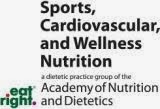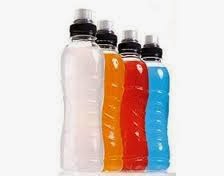I don’t handle the cold very well, so it might surprise you that I absolutely love running in the snow. I think of trail running in the snow like running on the beach; it is peaceful, dynamic, and challenging. The scenery is just a little bit different. To make a snowy run fun, it is important to have the right gear.
Here are some of my favorite winter running
essentials:
- Base
layer. Starting with a good base layer is
essential for days when it is below freezing. Any good pair of long
underwear will do, just as long as it will fit under your next layer. If
you tend to get super warm while running, you may not need a base layer.
- Head
gear. No, not the kind you have when you
have braces, but the kind that keeps your head warm. A thin ear warmer
works well on days when it is not snowing, but if it is snowing or really
cold, you may want something to cover your head. If it is EXTRA cold, like
single digits or below, you may want a thin face mask to cover your nose,
chin, and ears. I use the one I bought for skiing, because it is thin and
I can put it in my pocket if I don’t need it.
- Hand
wear. I have one pair of lighter running gloves
for warm(er) days or for layering on cold days. On those extra cold days,
I usually wear my fleece gloves over my lighter gloves, and then take them
off when I start to warm up.
- Foot
wear. In effort to prevent your good
running shoes from getting wet and ruined, always keep an old pair on
hand. You’ll also want a pair of taller socks to keep the snow out of your
ankles. You will absolutely want some Yaktrax, they
are essential for winter running or hiking. While wearing
them, I never have to worry about variable conditions or slipping on ice.
They are the second best running investment I have ever made (and they
aren’t that expensive!), next to a good pair of shoes.
- Wind
resistant/proof running pants. These will
protect your quads from the wind chill, and are absolutely essential.
Ideally, you’ll be able to layer long underwear underneath them on the
days when it is close to zero degrees.
- Quarter
zip pullover. This is a great second layer
over your long underwear, a tank top, or a tee shirt. They keep you extra
warm without a lot of weight.
- Down
vest. These are awesome! They are light, don’t
interfere with any arm swinging, and keep you warm…but not too warm,
because you can always roll up your sleeves.
- Wind-proof
jacket. I only wear this one on the extra
cold and snowy days (like today). It doesn’t have much weight or warmth to
it, but it keeps the wind chill out, which will keep your sweat from
freezing. I like having the big pockets in case I want to carry my phone
or take off my gloves or hat.
While having the right gear helps, having a buddy
also helps make it fun. Don’t limit yourself to the treadmill during the winter
months! All of these items would also work for winter hiking, snow shoeing, or
cross country skiing. Be safe out there!
Do you run in the snow? What is your
favorite piece of winter running gear?
About the author:
Lauren Larson is a graduate student in the Master of Science Coordinated
Dietetic Internship Program at Colorado State University in Fort Collins, CO.
She plans to have a private practice that focuses on planning and preparing
more healthful meals at home, managing food sensitivities and allergies, and
sports nutrition. Read more about Lauren's recipes and obsessions at NewestObsession.com.








